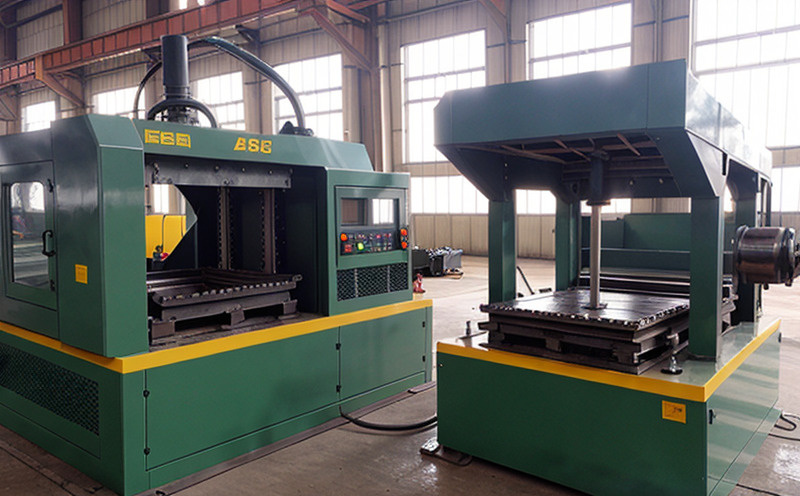ASTM A745 Ultrasonic Testing of Austenitic Steel Forgings
The ASTM A745 standard specifies the mechanical testing requirements for austenitic stainless steel forgings. This service focuses on ultrasonic testing (UT) as one of several non-destructive testing techniques used to inspect these materials. Ultrasonic testing is particularly valuable in industrial manufacturing and processing, where quality assurance plays a critical role.
The ASTM A745 specification ensures that the mechanical properties meet certain standards, which are crucial for applications requiring high strength-to-weight ratios and resistance to corrosion. Austenitic stainless steels, such as those defined by this standard, are often used in sectors like aerospace, chemical processing, and food manufacturing due to their exceptional durability.
Ultrasonic testing is non-destructive, meaning it does not alter the material being tested. It uses high-frequency sound waves that penetrate through the forging. When these waves encounter an interface or defect within the metal, they are reflected back to a sensor. The time and strength of this reflection provide critical information about the internal integrity of the forging.
The process involves several key steps: specimen preparation, inspection setup, testing, and evaluation. Specimens must be clean and free from external contaminants that could affect the test results. Once prepared, ultrasonic probes are positioned along the forgings to ensure coverage of all critical areas. The equipment used includes advanced ultrasound machines capable of generating precise sound waves.
The acceptance criteria for ASTM A745 include specific mechanical property requirements such as yield strength, tensile strength, and elongation. Ultrasonic testing complements these by ensuring that there are no hidden defects like cracks or inclusions within the material matrix. This helps manufacturers achieve compliance with both industry-specific standards and broader regulatory frameworks.
By adhering to ASTM A745 ultrasonic testing protocols, businesses can ensure their products meet stringent quality expectations. The service provided ensures that each forging undergoes rigorous inspection, thereby enhancing reliability and safety in end-use applications. This is particularly important for critical components where even minor flaws could lead to catastrophic failures.
The use of this standard extends beyond mere compliance; it represents a commitment to excellence in materials science. Through continuous improvement and adherence to best practices outlined by ASTM A745, organizations can build trust with clients and stakeholders alike. The results generated from ultrasonic testing are crucial inputs into quality assurance programs designed to meet customer requirements.
Implementing this service requires specialized knowledge and equipment. Our experienced team utilizes state-of-the-art technology to perform these inspections accurately and efficiently. We employ industry leaders in instrumentation, software solutions, and training programs to stay abreast of developments within the field.
In summary, ASTM A745 ultrasonic testing is an essential component of quality assurance processes for austenitic steel forgings. It provides critical insights into internal structural integrity that supports adherence to mechanical property requirements specified in ASTM A745. By leveraging this service, manufacturers can enhance their product offerings while demonstrating commitment to safety and reliability.
Benefits
- Enhanced Product Quality: Ensures that all forgings meet the stringent mechanical property requirements set forth by ASTM A745.
- Better Customer Satisfaction: By adhering to industry standards, you build trust and confidence with your clients.
- Increased Safety: Detects hidden defects that could lead to failures in critical applications.
- Cost Efficiency: Early detection of flaws reduces the need for costly repairs or replacements later on.
Quality and Reliability Assurance
Quality assurance in ultrasonic testing involves several key aspects. First, it is essential to have a well-calibrated instrument and probes suitable for the specific type of forging being tested. Proper calibration ensures accurate measurements throughout the inspection process.
The second critical factor is ensuring that all personnel involved are trained according to ASTM A745 guidelines. This includes understanding how different variables can affect test results, such as probe angle selection or coupling fluid usage.
A third element involves maintaining detailed records of each inspection performed under ASTM A745 standards. These records should document not only the findings but also any corrective actions taken based on those findings.
International Acceptance and Recognition
The ASTM A745 standard is widely recognized internationally due to its rigorous nature and comprehensive approach. Many countries incorporate elements of this specification into their own national standards for austenitic stainless steel forgings.
For example, ISO 9001 certification often includes requirements aligned with ASTM A745, emphasizing the importance of consistent quality assurance practices across industries worldwide. Additionally, many companies operating globally rely on ASTM A745 as a benchmark when specifying materials for international projects.





